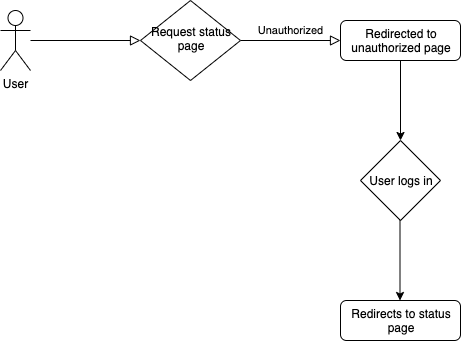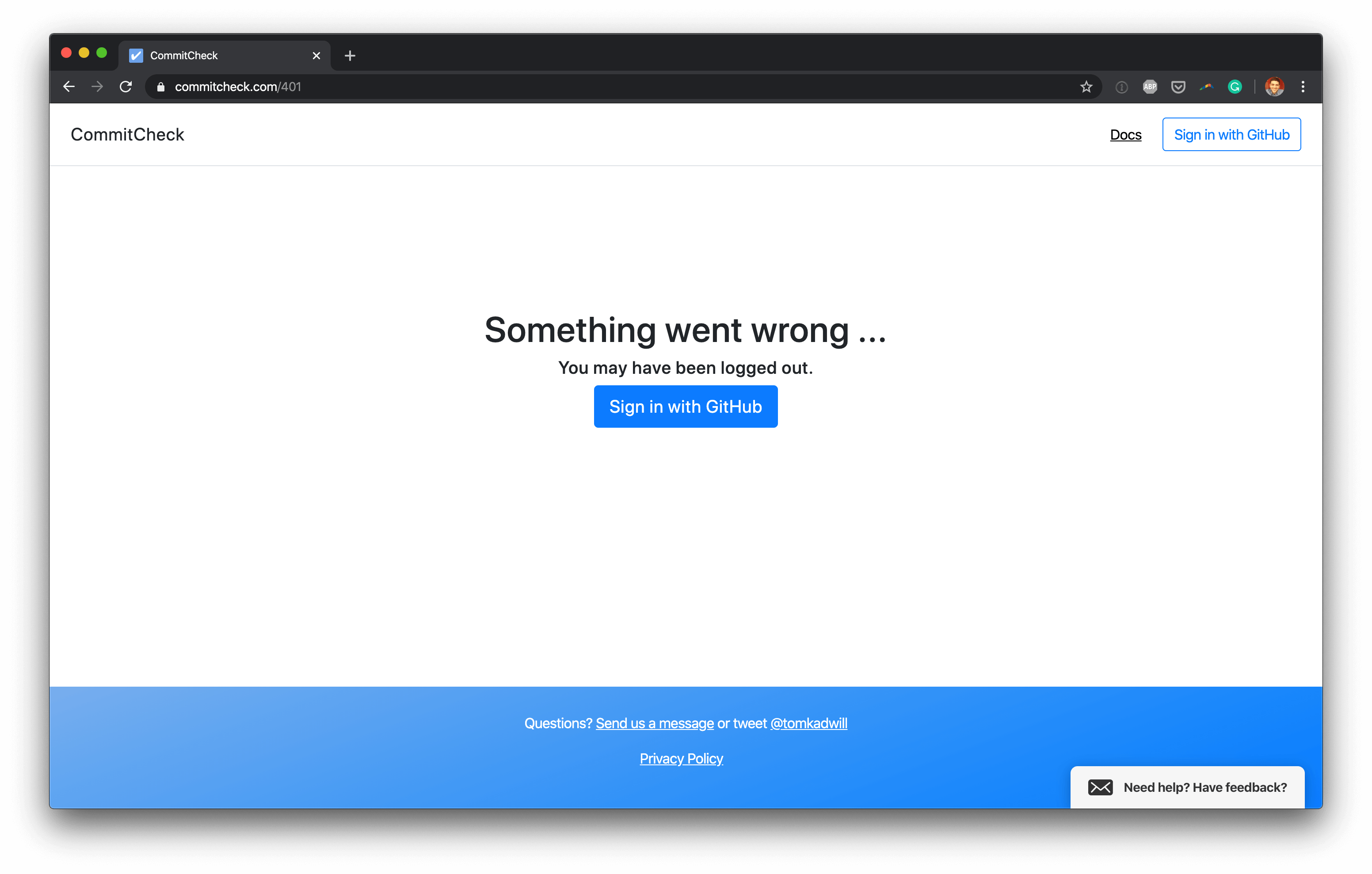Unauthorized request best practices with Devise
I added a new feature to commitcheck.com that allows users to check the status of their PR. For security reasons, users should only have access to status pages that they are authorized to see. I handle authorization using GitHub’s API, but I wont cover that now. The thing I want to talk about is the UX for unauthorized requests.
Good UX
There are two reasons why someone would hit the unauthorized page: they don’t have access or they are not signed in.
If the user doesn’t have access then the user journey is pretty simple. The user requests the status page and get redirected to an error page, either 404 or 401.

The journey for a logged out users is a little more complicated. The user requests the status page and gets redirected to an error page (ideally the error page should advise them to login). When the user logs in they should be redirected to the page they originally requested.

For example, the user requests commitcheck.com/status/rails/rails/123 and gets redirected to an error page. When the user logs in they should be redirected back to commitcheck.com/status/rails/rails/123.
If the user is trying to request a page they don’t have access to, they will continually be redirected to the error page.
Redirecting to unauthorized page with Devise
I’m using Devise to handle authentication in CommitCheck. Devise doesn’t provide this UX out of the box but it’s simple to implement.
The first thing I did was ensure that unauthenticated requests hit the error page. To do that I created a custom failure app in lib/custom_failure.rb:
class CustomFailure < Devise::FailureApp
def redirect_url
page_unauthorized_path
end
def respond
if http_auth?
http_auth
else
redirect
end
end
end
And added it to config/initializers/devise.rb:
config.warden do |manager|
manager.failure_app = CustomFailure
end
I also added lib to my Rails autoload path, in config/application.rb:
config.autoload_paths << Rails.root.join('lib')
Next I defined the page_unauthorized route that I’m calling in CustomFailure:
get '/401', to: 'home#page_unauthorized', as: :page_unauthorized
Finally, I wrote the new controller action in HomeController that serves the 401 page:
def page_unauthorized
render file: 'public/401.html', status: :unauthorized
end
In my case the 401 page has the usual CommitCheck styling and displays an error message, which prompts the user to login:

Redirecting to previous resource with Devise
In this section I’ll explain how I achieved the second user flow with Devise. The aim is to redirect the user back to the path they originally requested, after authenticating.
Devise has a method called stored_location_for(resource) which redirects the user back to a stored location. Devise stores a location automatically when a request is marked as unauthenticated. To implement, I updated HomeController#page_unauthorized to redirect to the stored location:
def page_unauthorized
if user_signed_in?
redirect_to login_redirect_path
else
render file: 'public/401.html', status: :unauthorized
end
end
private
def login_redirect_path
stored_location_for(:user) || admin_path
end
That’s it. Devise makes it simple to build a nice “unauthorized -> login -> redirect” user journey.